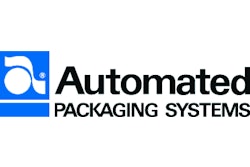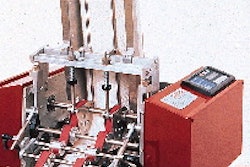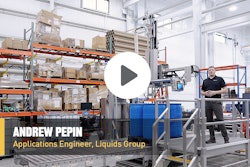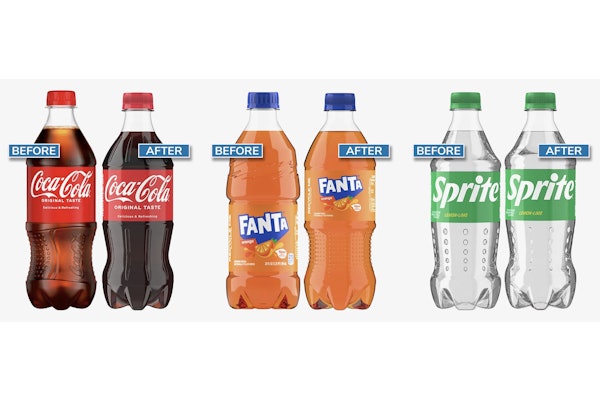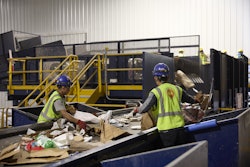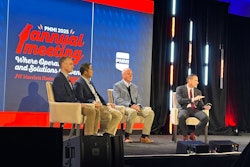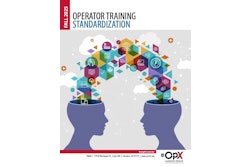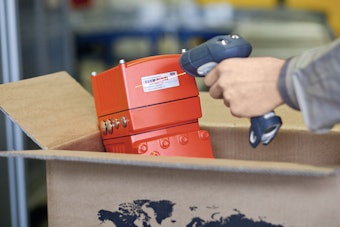Mike Miller brought more than his graphic experience with him when he joined Aquaria as art director two years ago. His previous exposure to a packaging system has virtually revolutionized the way his new Moorpark, CA, company packages its line of filters and parts. "When I joined the company, I knew that their packaging graphics were rather behind the times," Miller recalls. "Then I found that their packaging operation was very dated, too. The result was that the company's packages didn't look very presentable when they were on display." His first year at Aquaria found the company adopting a lot of changes. He discovered that Aquaria production workers were pulling plastic bags from wickets, inserting the company's filters and then sealing them with a hand tool. To achieve any kind of output meant that the seals were very inconsistent. "Many of the seals were not straight," he remembers, "and that led to packages hanging off the pegs at odd angles because the edges weren't square. Since those bags were largely clear, the product didn't look very good either. Everything seemed rather sloppy and unprofessional." New baggers While he had planned to make improvements to Aquaria's package graphics, Miller realized that that would only address one part of the product presentation problem. The company manufactures and packages aquarium filters under a variety of brand names for an impressive list of retailers, including Kmart and Wal-Mart, as well as pet stores. Miller had earlier worked for a toy and hobby company that bagged a lot of replacement parts. That company's packaging system, he reasoned, could help Aquaria improve both its output and its quality. He explained to company management that by switching to Autobag(TM) bags on a roll from Automated Packaging Systems (Streetsboro, OH), and that company's bagging systems, the appeal of the product could be dramatically improved. So Aquaria contacted Automated Packaging's local representative. By early '96, the company was operating three Model HS-100 EXCEL(TM) bagging machines from Automated, packaging from one to three filters per bag. Sales have been so strong that a fourth machine has been ordered, Miller reports. When the machines were ordered in late '95, Miller and his department began to work on improving the graphics. "I explained that we could shift to white opaque bags and have Automated print nice four-color graphics on them," he says. Today, the vendor supplies 29 different bags to Aquaria in sizes from 41/2" x 111/2" up to 91/2" x 111/2". They cover three complete product lines or brands, Marineland, Ultraflow and Aquatech. Neptune and Eclipse are other brand names that Aquaria packs in the redesigned packaging. In-house art "Before we even got the new designs on press, we had already spent about $80ꯠ on this project," says Miller. Just at the start, Miller and his department had to prepare about 20 versions of artwork, each costing about $2군. And the company committed to purchasing the packaging machines, too. Although the graphic change was overdue, Aquaria justified the investment based on greater output from the machines and the tremendous improvement in the appearance of the packages in retailers' displays. All of the new designs were developed in-house. "We do everything from the photography to the copywriting here. We also do most of the prepress work, then ship the computer files to Automated." The new designs feature a colorful variety of fish, penguins, ferns, rocks and other undersea specimens. Automated prints the 2-mil low-density polyethylene bags by flexo, then ships the bags in rolls to Aquaria. In the plant, a roll of bags is placed on the bagger, and the operator's foot pedal automatically advances a bag to the loading station. An air-jet blows the bag top open and the operator inserts the product. The foot pedal advances and heat-seals the filled bag while it presents the next bag for loading. The seal process also cuts the finished bag from the web, and it drops into a box. For bags that contain a single filter, the HS-100 systems are capable of producing 30 bags/min. When loading multiple filters is called for, each bagger typically will produce about 15 bags/min. "Our packaging people were working hard and fast on the old machines," Miller says. "The problem was they were doing a sloppy job. With the new machines, they're now working medium-fast, and doing a much better job. "The new machines are faster. But even more important, they're repeatable. We now make good, square, nice-looking packages every time. That's new for us. And graphically, the new designs are a world of difference from what we had before. "I've heard that our bag consumption is way up, so our sales must be going well. That's why I think the plant is ordering another bagging machine."




